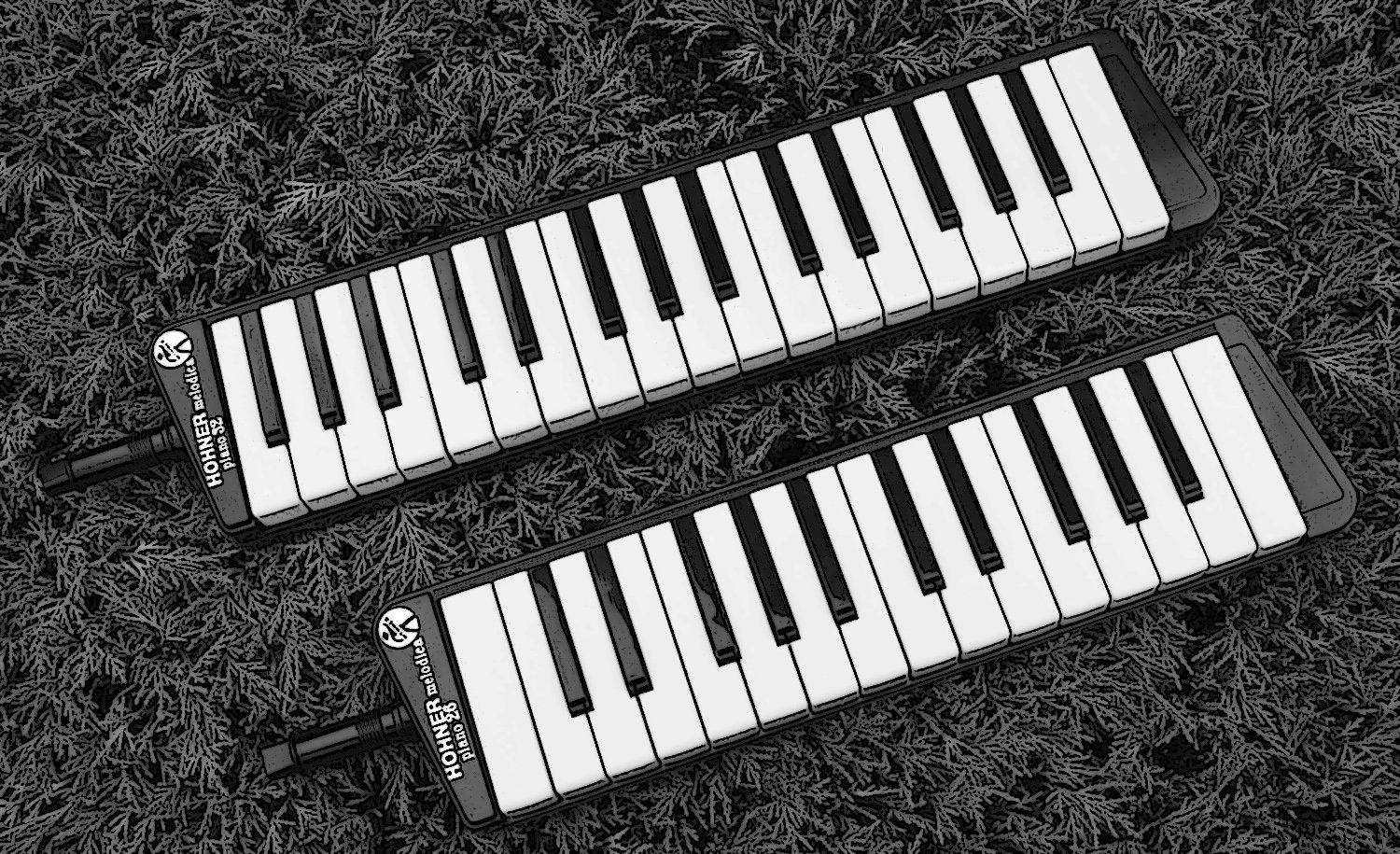Melodica Blues Jam with All the Stops Out
Tagged: Blues, Blues melodica
- This topic has 12 replies, 7 voices, and was last updated 9 years, 2 months ago by
 Shannon M.
Shannon M.
-
AuthorPosts
-
February 1, 2015 at 8:42 pm #3974
 LowboyParticipant
LowboyParticipantFirst, by agreement of use, I must give credit for the backing track to http://www.guitarbackingtrack.com. These folks provide great backing tracks by many artists in many genres. One of the best sites for free backing tracks I have found to date. You can use the tracks for free for non-commercial purposes. The organ player on this track is killer as evidenced by his or her solo.
Hope you like this one. There is still a long way to go on my technique to wring the most expressiveness out of my favorite Hohner melodica.
You will have to tolerate a bit of background noise (static electricity discharge) during the start of the first verse. My mouthpiece flew off for a few seconds during one of the last verses. But the take was so spontaneous, I decided to let if go.
Regards,
Lowboy
February 2, 2015 at 3:18 am #3985 Melodica-MeParticipant
Melodica-MeParticipantLowboy, your technique is feeling real good.
Melodica-MeFebruary 2, 2015 at 12:59 pm #3989 LowboyParticipant
LowboyParticipantThanks Melodica-Me.
I am starting to get these instruments to talk, but I figure I need about one or two more years (or the rest of my life!) before I really feel I have good control over the techniques and their application in the blues and related genres. The trip is enjoyable.
Regards,
Lowboy
February 2, 2015 at 9:36 pm #3992 Alan BrintonParticipant
Alan BrintonParticipantYou are really cooking!
February 3, 2015 at 10:01 pm #4011 AndreParticipant
AndreParticipantHi Lowboy
Great sound, this one definitely have space for a good mind voyage!
Excellent technique and yes the melodica is talking!
Great!February 4, 2015 at 5:22 am #4014 Tom TeasleyParticipant
Tom TeasleyParticipantNice stuff, Lowboy! Great groove and lines!
TomFebruary 5, 2015 at 3:14 am #4025 barbParticipant
barbParticipantHi Lowboy! Thanks for posting – you are making the melodica speak!
February 5, 2015 at 3:25 am #4027 Shannon MParticipant
Shannon MParticipantVery nice. I particularly like the phrasing around 3:27. technical question-which melodica are you using here, what effects are you using, and how are you miking it? Also, could you name the backing track you are using? I have listened to all of your soundcloud tracks and have a hard time finding the tracks you use. you have made some excellent choices. 8^)
February 5, 2015 at 9:38 pm #4047 LowboyParticipant
LowboyParticipantHi Shannon,
I will provide more information later, but quickly, I am playing a Hohner Piano 27. Only effect is delay. Of course I used some EQ (not much) and compression during recording. All modulations you hear originate with technique (and having the right melodica). Mic is just standing in the room, but I play the mic considerably. Much of this is documented in previously posts. Search on “blues” or “blues melodica” or “keyboard harmonica” on this site to find many of my posts on these topics. I have to run. I will post more later. The Guitar Backing Track website is hard to use. Keep trying and you will find a list of blues backing tracks that you can preview.
Lowboy
February 6, 2015 at 12:14 am #4050 LowboyParticipant
LowboyParticipantHi Shannon,
Now I have some time. The piano harmonica I used in the recording above is a vintage Hohner Piano 27. The vintage Piano 26/27/32 series of Hohner keyboard harmonicas are the only models in the world that I know of that project the sound out of the back of the instrument. The sound exits through a narrow row of sound holes. One day about a year ago I discovered by accident that if you hold the back of this keyboard harmonica against your chest, the sound became muffled. I also discovered that if you move the instrument towards and away from your chest, or twist it open and closed against your chest, or do other things with it, you could modulate the sound in several big ways (wah wah, volume, vibrato, and other things that I still can’t explain and that I am still working on). To do this, you must hold the keyboard harmonica at the end opposite of the mouthpiece so that you can hold the back of the instrument tightly (at times) against your chest. I never hold a keyboard harmonica by the strap. I need to feel connected to the instrument. The downside is your head is forward and closing up your airway a bit. But sometimes I am also waving the instrument around high in the air as well. I have not found air flow to be a problem, but certainly I am not opening the airway up either as a teacher might suggest you do.
Sometimes I move the mic in close, coming in at chest height from the left side. So if I am facing 12:00 o’clock, the mic is positioned at 9:00 and facing me so that it catches all the sound coming out of the back of the instrument as I move it around. Lately, I have also experimented standing about 12 to 18 inches from mic but still having the mic at a 9:00 o’clock position. That is how I recorded the last jam posted above. The sound comes out of the back of the instrument, bounces off my chest, and is projected into the mic. It makes what is otherwise a fairly quiet instrument quite loud.
It gets better. I THINK (not proven yet) that when I try and bend a note and move the instrument quickly at the same time, that the inertia of either starting or stopping the movement influences the reed movement and contributes to the bend. I have not yet figured out exactly what is going on yet, but moving the instrument quickly (or not so quickly) does something to the sound, similar to the doppler effect. I also play off of the mic this way, moving the instrument quickly towards and away from the mic. It could be in my head, but I think modulations are happening because of this.
There is more too! If you fully compress a short (26- or 27-key) keyboard harmonica against your chest, basically sealing the outlet, and then pressurize the instrument to a high pressure, the reeds seem to act differently as you press a note and release the instrument from your chest. I think it causes an initial bend as well due to the release of the extremely high pressure. If the instrument is highly pressurized (held tightly against your chest) and you play notes, not only are the notes muffled because the outlet holes are sealed, but I think the reeds behave differently as well, and the sound is different.
Again, I do not fully understand what I am hearing yet, nor do I have explanations that I feel are accurate, but I do know that I am getting some really expressive results from these cheap, little, plastic melodicas that you can get on Ebay used for about 30 to 60 dollars.
If you are really into exploring melodicas, I would recommend getting one of these seemly unremarkable instruments and exploring some of the above techniques. The techniques may be hard to execute or seem awkward at first, but after a long while, you will learn the subtleties, feel more comfortable, and the effects will be enhanced. Don’t be surprised if at first you find the Piano 26/27/32 series melodicas to be mediocre. They are pretty much mid-level, plastic melodicas. But they have a sound I like and one magic feature–sound holes on the back!
Lowboy
 February 6, 2015 at 1:22 am #4051
February 6, 2015 at 1:22 am #4051 Alan BrintonParticipant
Alan BrintonParticipantIt is harder to find a Piano 27 than a Piano 26 (of the kind pictured above). I just recently acquired a 27, though, and would like to make two observations. (1) Although the 27 is sometimes referred to as an alto and the 26 as a soprano, the 27 starts out only 6 keys lower than the 26. (2) I was surprised to discover that, for me at least, the Piano 27 is noticeably harder to play. The reason is that those lower six notes take quite a bit more air than is required by any keys of the Piano 26. So with the Piano 27, I’m much more conscious of having to adjust my breathing in the course of playing.
Although these Hohners are cheaply made, their unusual back plate is distinctive and, to my eye adds a quality look and feel. They and the Piano 32 have a distinctive, richer, more muted sound than other inexpensive melodicas, for example the Hohner Student (or Instructor) 32, which sounds tinny by comparison.
February 6, 2015 at 1:58 am #4053 LowboyParticipant
LowboyParticipantHi Alan,
Yes, maybe I exaggerated a bit about the Piano 26/27/32 being cheap. I feel for the money, they are reasonably well made and I personally really like the look and feel of these piano harmonicas. It is of course a product of German design and manufacture, and I don’t think the Germans are capable of making anything “cheap.” I am not crazy about the mouthpiece design, but soon I hope to hook up a sax, oboe, or clarinet mouthpiece to see what happens.
I probably prefer the 26s over the 27s too for the same reason you mentioned. I just happen to pick up the 27 for this recording. Of course, the low notes are the easy notes to bend, so if lots of bending is on the menu, the 27 is the right choice. The 26 stands out more in a mix, and you can still bend the lower notes.
The other thing a 27 does well is to respond to tube distortion. The lower harmonics of the lower notes are really brought out with a distortion pedal and they give up that Chicago blues harp sound readily.
Lowboy Bootay
February 7, 2015 at 3:18 am #4064 Shannon MParticipant
Shannon MParticipantLowboy,
thanks for the detailed response. I agree that these melodicas, although midrange, have a terrific potential and tone. I have both the 32 and the 26 (purchased NOS from HOHNER) and although the action leaves a bit to be desired, have a bluesy tone that I have yet to find an equal to. Personally still experimenting, and at nowhere near your skill level, but really appreciate your comments and contributions here. Thanks
Regards,
Shannon
-
AuthorPosts
- You must be logged in to reply to this topic.
